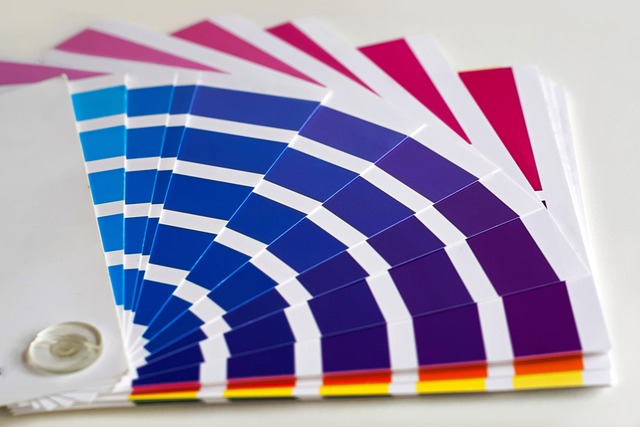If you’ve ever bought a T-shirt that looked amazing the first time you wore it, but by the third wash the design was already fading or peeling, you know the disappointment. Nobody enjoys investing in something that doesn’t last — whether it’s uniforms for staff, sports jerseys, or just a personal fashion piece.
That’s where DTF printing comes in. Over the last few years, people have casually been talking about DTF printing services in UAE as a solution that keeps prints looking fresh and vibrant much longer than older methods like vinyl or screen printing.
So, what makes it different? Let’s walk through it.
Table of Contents
DTF, or Direct-to-Film printing, is exactly what it sounds like — designs are printed onto a special film, sprinkled with adhesive powder, and then heat-pressed onto fabric. The result? A design that literally bonds with the fibers of the material instead of sitting awkwardly on top.
Imagine this: You hand out branded shirts at an event, and within a month half of them look worn out. That doesn’t just waste money, it kills the impression you were hoping to make.
That’s why durability is such a big talking point. And it’s why DTF printing services in UAE are becoming more common for uniforms, event merchandise, and even daily wear — because nobody wants prints that vanish after a few spins in the washing machine.
Here’s how it works, without overcomplicating things:
- Print the design on transfer film using durable inks.
- Sprinkle adhesive powder so the ink bonds tightly.
- Heat press the film onto the fabric.
- Peel away the film to reveal a smooth, flexible, permanent design.
Simple, but the results are surprisingly strong.
Screen printing? Great for huge runs but less flexible.
Vinyl transfers? Bold but tend to peel.
DTF? It gives the vibrancy of vinyl without the stiffness and the durability of screen printing without the setup costs. That balance is why people keep bringing up DTF printing services in UAE in conversations about better printing methods.
It sounds like marketing talk, but it’s true — DTF prints hold up for 50 or more washes without major fading or cracking.
That means the company logo on your uniform doesn’t look sad after a couple of weeks, and your favorite custom hoodie still looks sharp even months later.
Nobody likes stiff or heavy prints that make a shirt feel like cardboard. The nice thing about DTF is that it’s soft and flexible, moving with the fabric.
So, you’re not just getting durability — you’re getting comfort too.
On darker fabrics, many printing methods struggle to keep colors crisp. DTF solves that by laying down a white ink base first. It’s like priming a wall before painting — the colors pop brighter, sharper, and without bleeding into the background.
In a place like the UAE, where branding and presentation are huge, durability is a deal-breaker. Businesses want uniforms and promotional wear that don’t look tired after a few weeks.
That’s why DTF printing services keep coming up in discussions — they just last longer, and that reliability means fewer headaches for business owners.
- Work uniforms that survive daily use.
- Sportswear that can handle sweat and stretching.
- Promotional T-shirts and caps that keep your brand looking sharp.
- Casual fashion pieces that stay stylish for months.
DTF isn’t just about one industry — it’s flexible enough to fit into all kinds of everyday needs.
Think construction sites, warehouses, or hospitality uniforms. These clothes go through a lot, and so do their prints. DTF designs hold up against dirt, repeated washing, and tough conditions without giving up easily.
At its core, DTF relies on:
- Strong, specialized inks
- Premium adhesive powders
- Heat transfer that really locks the design in
The mix of all three is what makes it so reliable.
Ever noticed how sometimes a print run looks slightly different from the last? DTF avoids that by regular color calibration, often with G7 standards. It’s a bit like tuning a guitar — everything stays consistent, no matter when it’s produced.
Compared to screen printing, which can waste a lot of ink, DTF is often cleaner and uses eco-friendlier inks. That’s why some people see it as not just durable, but also a more sustainable choice.
Yes, the upfront cost of DTF can sometimes be a bit more than vinyl. But since it lasts longer, you actually save money in the long run by avoiding constant reprints.
It’s the old “buy cheap, buy twice” rule in action.
At the end of the day, what makes DTF printing services in UAE stand out isn’t fancy marketing — it’s simply that they work.
They hold up against time, washing, and daily wear, while staying soft, flexible, and professional-looking. For uniforms, events, or personal style, that kind of reliability makes all the difference.
1. How long do DTF prints last?
They can survive 50+ washes without serious fading, cracking, or peeling.
2. Are DTF prints comfortable to wear?
Yes, they’re soft and flexible, unlike vinyl, which can feel heavy or stiff.
3. Do DTF prints work on dark fabrics?
Absolutely — the white ink base ensures colors stay crisp and vibrant.
4. Is DTF only for uniforms and business wear?
No, it’s used for fashion, sportswear, events, and even casual custom clothing.
5. Why is DTF becoming popular in the UAE?
Because people want durable, professional-looking prints that can handle both everyday wear and the tough washing routines uniforms often go through.

